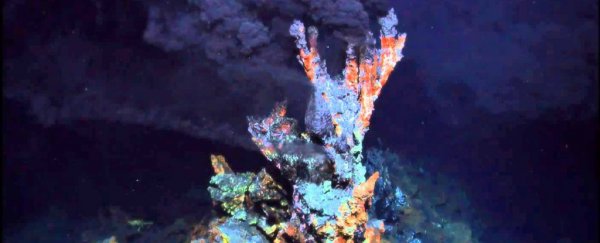Meet your great-great-great-great-great-great - well, let's just say your very oldest ancestor.
Its name is Luca, short for 'last universal common ancestor', and it probably lived near a hydrothermal vent at the bottom of the ocean about 4 billion years ago.
For the first time, scientists have put together a picture of what it might have looked like genetically. But not everyone is convinced.
The portrait comes from new research published July 25, in which scientists sorted through 6 million genes to settle on 355 they think Luca may have carried. Genes change in a predictable way over time, which means that comparing the DNA sequences of living organisms lets scientists make hypotheses about organisms we have no other way of studying.
So the scientists, led by William Martin at Heinrich Heine University in Germany, looked at genes from bacteria and archaea: the two large umbrella groups of single-celled life. Genes that could be found in at least two groups of bacteria and two groups of archaea were considered likely to have belonged to Luca.
The 355 genes the researchers picked out suggest Luca survived without oxygen, pulling energy from carbon dioxide and hydrogen instead, that it could survive very high temperatures, and that it required the presence of metals.
Scientists have long wondered if life might have begun near hydrothermal vents - places where seawater is heated by hot magma, and unusual microscopic organisms thrive. The picture the new paper paints of Luca matches that lifestyle quite well.
But scientists disagree about where exactly these features would place Luca on the timeline of early organisms. Some of its tricks are quite difficult to accomplish, but it's missing other characteristics considered critically important for life. It carries only a small number of tools to construct amino acids and nucleotides, for example, which are key building blocks for life as we know it.
Either way, scientists are gathering more clues about some of the earliest lifeforms. They may seem simple and almost alien, but these ancient ancestors eventually developed into humans - and everything else that lives on Earth.
This article was originally published by Tech Insider.
